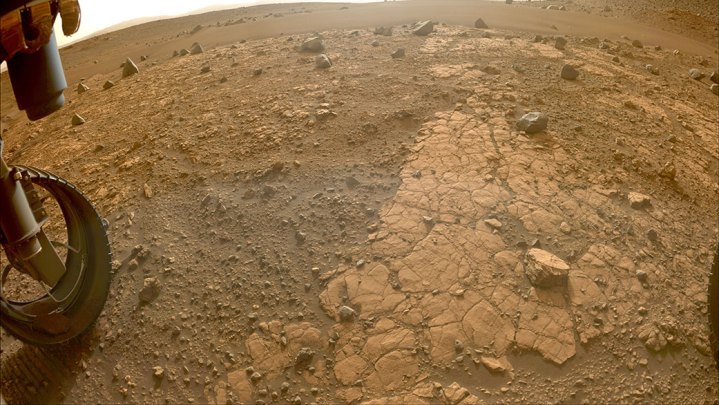With plans for the upcoming Mars Sample Return mission forming, NASA is getting ready to bring a piece of Mars back to Earth. But first, the Perseverance rover needs to collect and store samples from across the Jezero crater, ready for them to be collected and transported to Earth. The rover recently arrived at a new area of the crater named the Yori Pass, which is an exciting opportunity to search for evidence of ancient life.
The Yori Pass is located in an ancient river delta, where water once flowed and which could have been hospitable to microorganisms millions of years ago. This particular area is full of sandstone, a type of sedimentary rock formed from particles carried by water which are deposited and compacted together into stone.

This makes the area a great place to look for evidence of ancient life, according to experts. “We often prioritize study of fine-grained sedimentary rocks like this one in our search for organics and potential biosignatures,” said Katie Stack Morgan, Perseverance deputy project scientist at NASA’s Jet Propulsion Laboratory, in a statement.
The rocks in this area are also similar to those from an area that the rover previously explored this summer. “What’s especially interesting about the Yori Pass outcrop is that it is laterally equivalent with ‘Hogwallow Flats,’ where we found very fine-grained sedimentary rocks,” Stack Morgan said. “That means that the rock bed is located at the same elevation as Hogwallow, and has a large, traceable footprint visible on the surface.”
Fine-grained sedimentary rocks are particularly important in the search for life because they often contain clay minerals, which form in water and which are good at preserving organic molecules. If there ever was any life on Mars, then our best chance of seeing evidence of it will be to look at clay minerals — both because life is likely to have evolved near water, and because these minerals are better at persevering evidence of that life than other types of rock would be.
Although the Perseverance rover has a sophisticated suite of instruments on board, to perform a full analysis of such samples we need to get them back to a lab on Earth — hence the goal of the Mars Sample Return mission.
Editors' Recommendations
- Relive Mars rover’s spectacular landing exactly 3 years ago
- Yes, Perseverance is exploring an ancient lake bed but no, it hasn’t found signs of life (yet)
- Perseverance joins the 1,000-sols club on Mars, gets congratulated by Curiosity
- Perseverance rover catches footage of a dust devil on Mars
- NASA’s Mars rover uses its self-driving smarts to navigate toughest route




